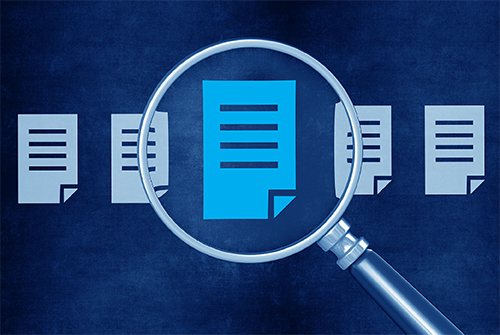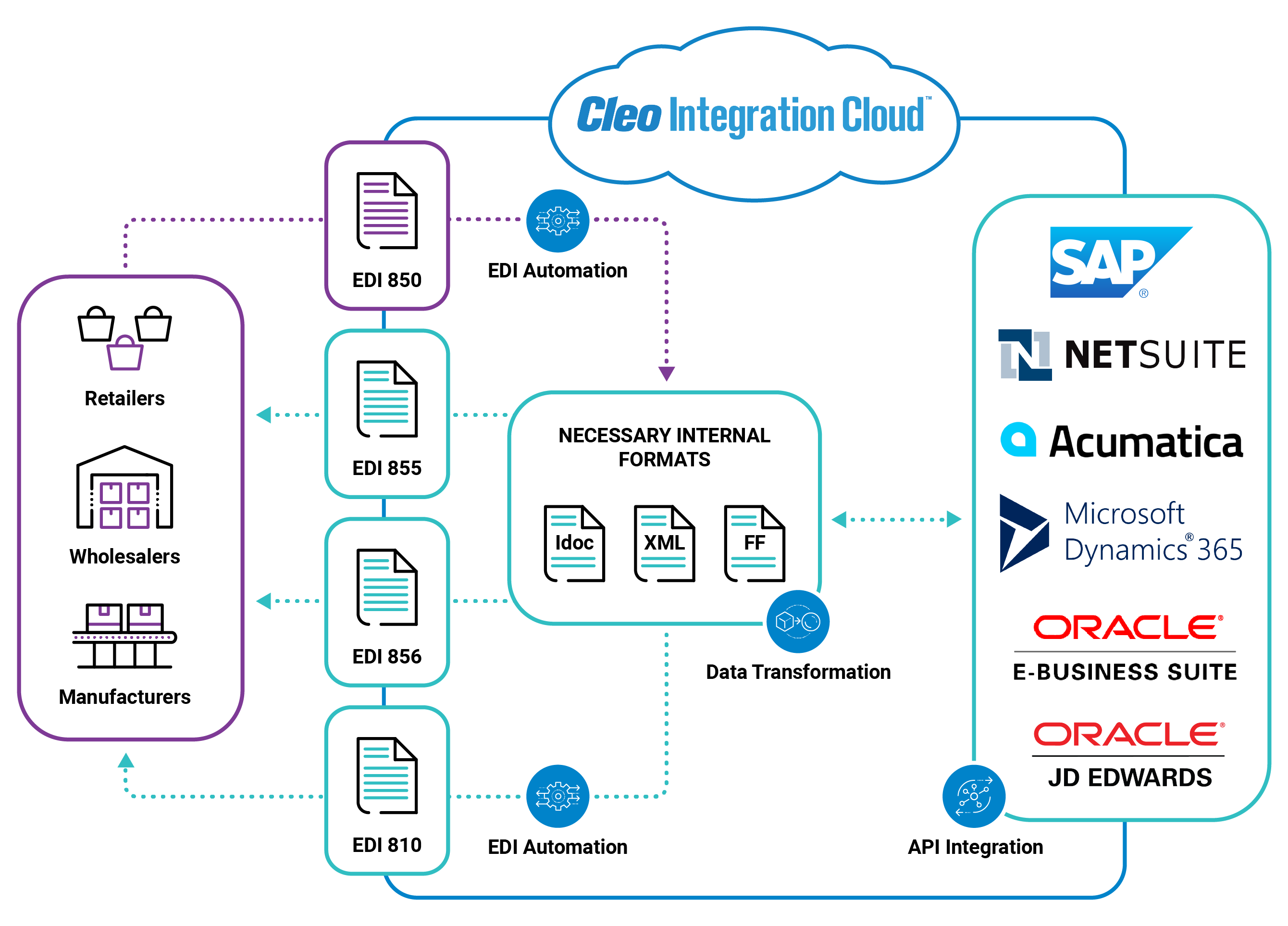EDI Tools: Building Blocks of an Integration Solution

What are EDI Tools?
EDI tools, or Electronic Data Interchange tools, electronically automate common intercompany business processes that take place between you and your business partners or customers.
EDI tools simplify the transmission of information for purchasing, invoicing, order processing, shipping notices, creating cost savings and efficiencies. EDI tools reduce or eliminate the amount of manual work required to exchange these critical documents so your business remains EDI compliant.
But EDI tools often lack the comprehensive or automated capabilities of an EDI platform. Think of EDI tools as individual components or small-scale solutions that can handle simple EDI interactions.
EDI Tools Terminology
There are many common EDI tool terms that overlap in describing similar EDI processes. Still, it's important to understand each one:
• EDI Mapping Tools - EDI mapping tools convert standardized forms of EDI into a format that is better suited for a new technical environment, such as an ERP system.
• EDI Integration Tools - EDI integration tools create EDI workflows between trading partners by establishing the EDI documents and endpoints to be exchanged with trading partners and then converting that data to another technical environment.
• EDI Middleware Tools - EDI Middleware tools provide services to EDI applications and other applications beyond those available from outside their own operating system. Think of EDI middleware tools as the software glue.
• EDI Translator Tools - EDI translator tools process EDI data to and from a format that is compatible with specific software, to regulated EDI standards.
EDI Tools Are Being Stretched to the Limit
Yet while probably 8 out of 10 companies today use EDI, every industry has unique needs and expectations from it. Logistics companies, for example, are clamoring for more control over their digital processes. Manufacturers want greater visibility into their supply chains. Retailers need to streamline their omnichannel sales and fulfillment processes. And very few EDI strategies, techniques, and tools can accommodate every industry use case; there really is no "one size fits all." But a modern cloud-based solution offers far more of what you really need.
Depending on the outcomes you aim to achieve, the EDI tools you select can either help or hurt. Leveraging EDI tools to solve a point-to-point problem to get compliant with one trading partner, for example, is short-sighted. As often is relinquishing control through a VAN (Value Added Network) in hopes of delegating integration altogether.
While there are many vendors and varieties of EDI tools on the market today, for the most part, the basic capabilities offered can be distilled into these areas:
‣ Standards compliance (e.g., ANSI X12, EDIFACT, Tradacoms EDI, XML, JSON, etc.)
‣ Data movement, translation, and readiness
‣ Data transformation/mapping capability (e.g., EDI to JSON, EDI to CSV, EDI to XML, etc.)
‣ Web services (enabling eCommerce, connecting to online marketplaces)
‣ Managed services/outsourcing
As with any software, depending on how it's configured, an EDI system can grow in complexity and shrink in value delivered if you merely bolt-on more disparate tools in hopes of achieving a solution that would be better attained with one flexible, do-it-all solution. In fact, recent research shows that 40 percent of companies surveyed view having multiple integration solutions as a major problem.
When you really look at what most EDI tools offer, or fail to, so you can begin to see the wisdom of having all these features in one place using a cloud-based integration solution.

Level Up Your Supply Chain: Explore Our EDI Solution
You’ve taken the first step towards a smoother supply chain by finding this blog - now discover how our EDI solution automates data exchange, saving you time and boosting efficiency.
Tools vs Solution: Why a Piecemeal EDI Tools Approach Is Not Enough
No doubt you've heard the saying, attributed to Aristotle, that "the whole is greater than the sum of its parts." This is true for a lot of things, but when it comes to using traditional EDI tools versus using a complete B2B cloud integration solution, modern wisdom prevails.
With a single-software solution approach to integration, the whole definitely IS greater than the sum of its parts. And this is because the traditional approach to using EDI as a B2B tool is broken. Far too often organizations are forced to choose between:
• EDI vendors that fall short of actually transforming AND integrating EDI documents into back-office applications like an ERP, CRM, TMS, WMS, among others
• Integration approaches that fail to provide true end-to-end visibility with real-time alerts and customizable persona-based dashboards
• B2B tools that are only able to specialize in one component of the integration process, leading IT/Operation teams to have to manage multiple tools to handle MFT, EDI and API demands.
Putting such unnecessary limitations on your business is not ideal, especially now, in the eCommerce-driven age of the cloud. Yet by raising your sights and adopting a single-solution ecosystem integration strategy instead of relying on the "old school" EDI integration tools approach, you'll be able to fix what's broken -- and quickly. It's a paradigm shift, where the "old way" is being supplanted by a new, better way.

By having all the EDI tools and capabilities you need in one place - alongside API and application integration capabilities to boot - you'll gain all the visibility and control you need for your business to seamlessly operate, forestall disruptions, and rapidly scale.
Here is why the "new way" is so much better, and why the whole is greater than the sum of its parts.
What Most EDI Tools Offer Isn't Enough
Among the many features offered by vendors of EDI integration tools, you'll find that very few have everything you need to be successful today. Some claim they're ideal for transferring documents automatically or reducing manual intervention, but few speak to enabling your operations to scale as your business needs change.
Truly robust EDI systems can automatically transmit EDI documents, as well as transform data to an internal format that can be ingested into your internal applications, like your accounting solution, or your ERP, TMS, or WMS system. Another benefit many of the more established EDI tools vendors may offer is a reconfigured EDI interface with templates & pre-built maps. Frankly, there are so many individual capabilities to consider, it's forever difficult to know whether you've selected what you need to achieve the complete solution you want.
G2's industry site presents a fairly comprehensive list of standard EDI features you'd expect, but here too, it's just a laundry list.
With that in mind, in our view a complete EDI system would also have:
• A protected and dedicated transaction network that sends, receives and encrypts the EDI transactions to your EDI trading partner
• An EDI translator application that formats and transforms your EDI transactions into the necessary format
• EDI mapping functionality to create automated bidirectional data flows from your internal business system to your trading partners. EDI mapping is a process of conversion in which EDI data is translated into a format that is better used in a new technical environment, such as an ERP system. During an EDI mapping event, data structures are translated from an EDI standard format (EDIFACT, ANSI X12, OFTP2, etc.) to a proprietary file that can be easily ingested into a back-end system (CSV format, txt, SAP IDoc, Flat File, or another ERP specific format).
• EDI support and expertise to keep transactions flowing
Many EDI solutions can readily handle one or more of the above EDI system functions; however, only a select few can do all four at a level that will enhance your supply chain visibility and position your company to turn on a dime in a way that is efficient, secure, and reliable.
But you also need a solution that will help you scale, and these days hyper-scalability is only possible by optimizing integration performance, enabling rapid application-to-application connectivity, and accelerating API-based integration patterns. So to get all this, what should you really be looking for?
What to Look for When Comparing EDI Tools to Cloud Integration Solutions
A central, cloud-based integration system takes advantage of all the common EDI tools and capabilities in ways that drive true business value to your bottom line. Whether that means aggressively bringing on more trading partners, expanding into new geographic markets, or launching new revenue models like omnichannel or eCommerce, modern EDI integration throughout your digital ecosystem is critical. And with a comprehensive approach, you can maximize your investment by getting an EDI solution that offers all of this plus gives you application integration, API connectivity, AND permits you to connect your existing on-prem systems to the cloud.
Your EDI tools should completely oversee the process of exchanging EDI documents with your trading partners and ingesting EDI information into your back-end systems.
This diagram provides an overview of how Cleo Integration Cloud enables you full control over your EDI processes:

Why is that better? Because under a single-solution approach that gives you API, EDI, and File-based integration all on a single platform, you gain insight into literally every business and EDI process, so you'll be able to quickly spot the trends and glean the insights you need to make critical business decisions.
What's more, all the same data can be shared across your entire organization - not just with IT staff - through persona-based dashboards that present the data in meaningful context depending on a person's role - from an EDI administrator to a Business Analyst, all the way up to the C-suite.
And if, like many companies, you want more transparency and hands-on control over your integration systems, and want to free yourself from relying on third-party EDI service providers, treating EDI as a B2B tool via a software solution that offers a self-service deployment option may be just what the doctor ordered. Real-time operational insight and flexible collaboration with key trading partners, made accessible via any device, is another benefit a complete solution would offer over piecemeal traditional EDI tools. Such proactive issue notification also makes it easy to follow and share tickets, and more natural to collaborate with your team so everyone stays informed and up to the minute.

Ready to Take Your EDI Research to the Next Level?
You've explored the benefits, now see how it applies to you! Get a personalized consultation on how our EDI solution can streamline your supply chain. Just provide some information for a free, no-obligation assessment.
Cleo Integration Cloud: The Complete Solution for Modern Times
Approaching your EDI tools decision from a strategic, value-creation perspective will help you make sure you're in a position of confidence and control with whatever technology solution you choose.
The Cleo Integration Cloud platform lets you opt for an entirely self-service approach, a 100 percent managed services deployment, or a blend of the two depending on what you decide is best for your business.
Cleo also gives you and your entire organization the integration visibility to make real-time decisions. It's a modern, cloud-based integration platform specifically designed for today's B2B environment.
Here are a few more reasons why Cleo is different.
First, we put API, EDI, and file-based integration technology on the same platform. We've enabled true end-to-end, B2B integration all the way into your back-office systems.
Next, we eliminated inefficiencies and key-person dependencies by automating manual processes, orchestrating business processes, and supporting any-to-any data transformations.
Lastly, we empowered both business and technical users with real-time, end-to-end integration visibility for any transaction and any trading partner - enabling your entire organization to have powerful insights that drive better business decisions.
What business outcomes will Cleo Integration Cloud deliver for you?
‣ Cost savings, lower TCO
‣ Improved SLAs
‣ Faster order processing
‣ Happier customers
‣ Fewer lost orders
‣ Processing more orders
‣ Reducing violations
‣ … and more
Cleo Integration Cloud brings you into the new world of "ecosystem integration," where the best B2B integration capabilities help you thrive. Connect every endpoint. Integrate end-to-end business processes. Analyze any EDI transaction. Maximize business agility. Minimize EDI complexity. And empower your teams to unlock value across your digital ecosystems.
If you believe, as Aristotle did, that the whole is greater than the sum of its parts, you may want to consider how using a complete platform that comprises all the EDI tools and capabilities you could ever need, plus application integration and API capabilities is a timeless solution for the modern era.

About Cleo
